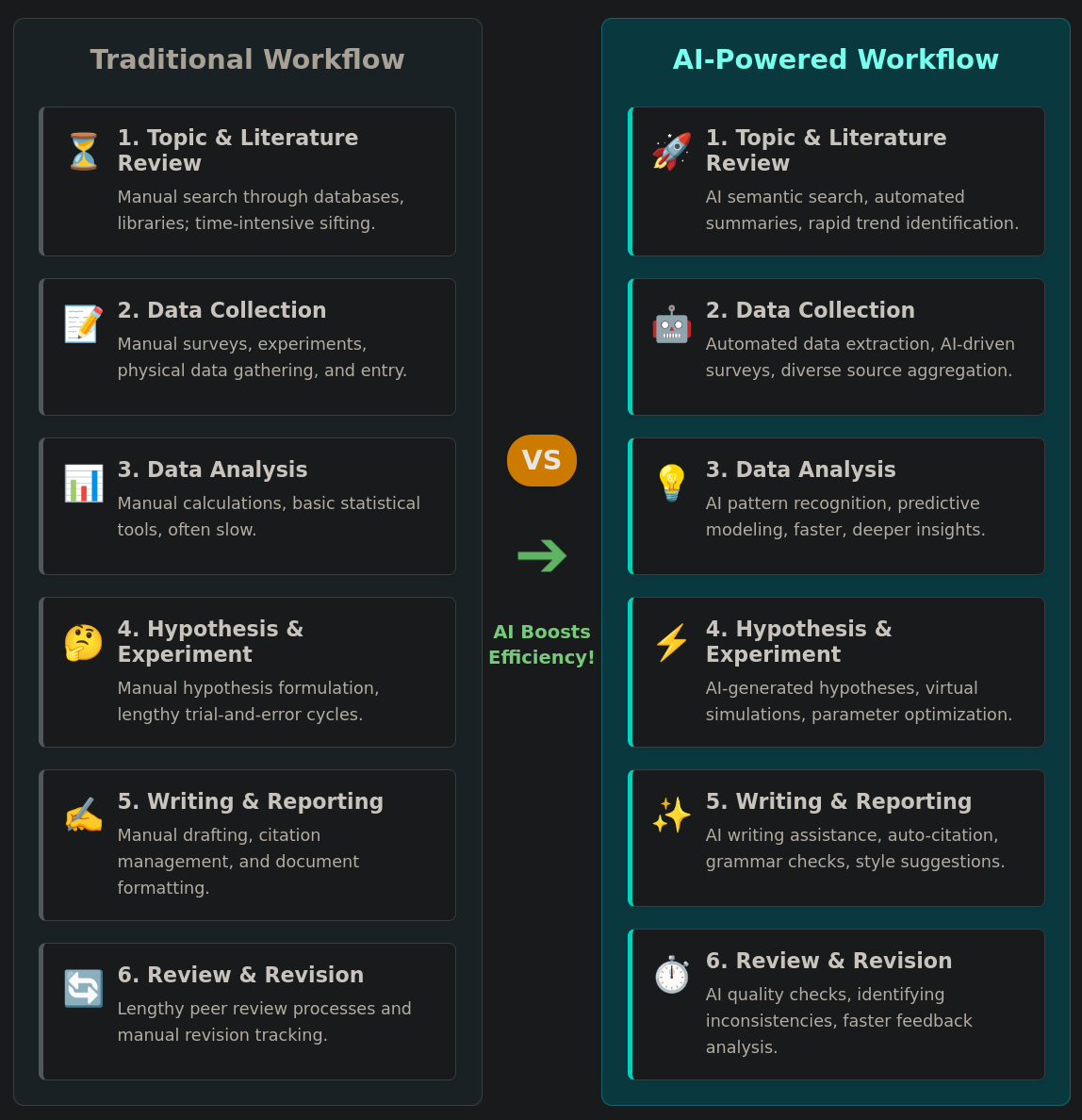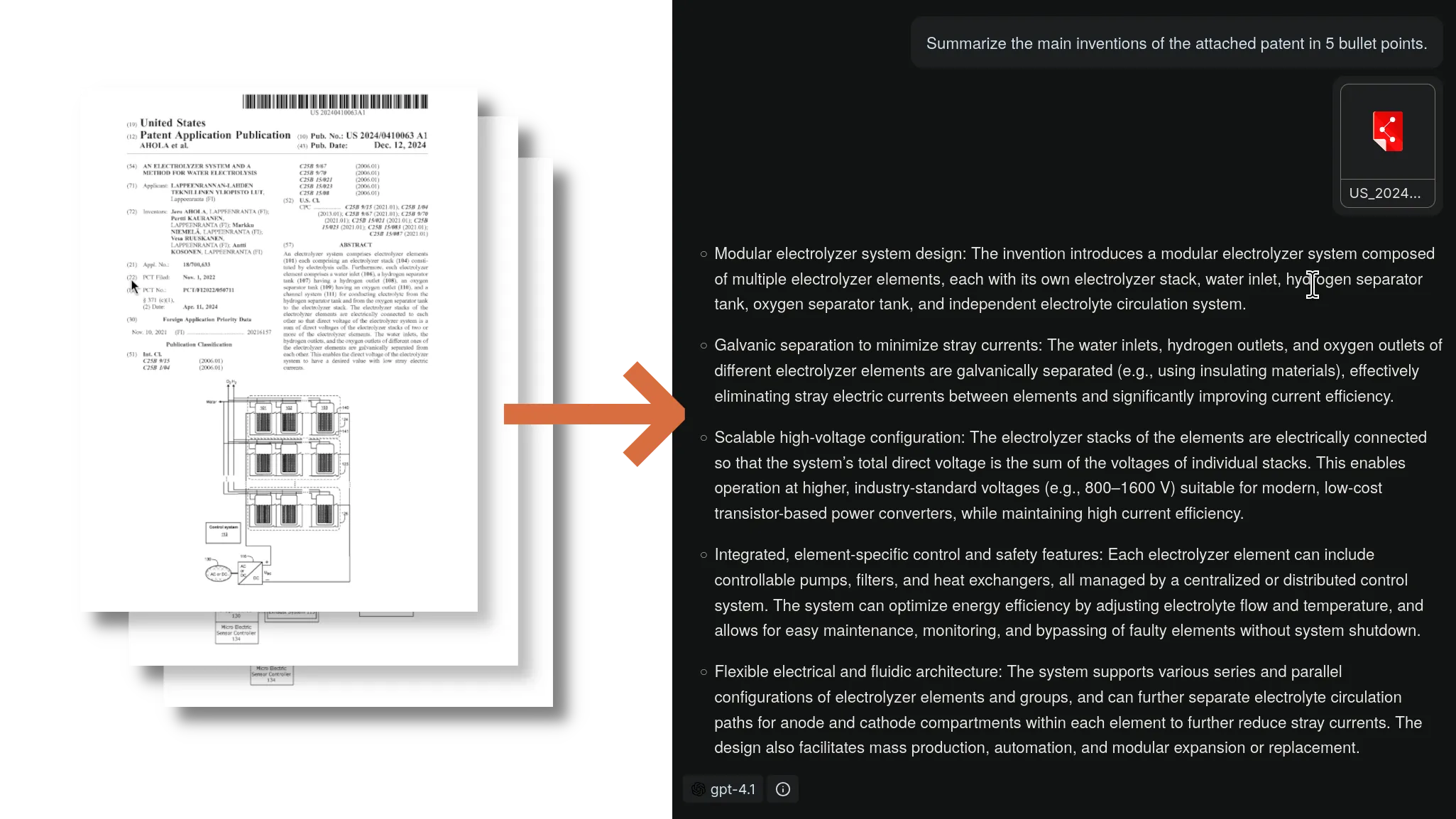AI Chatbots for Research and Analysis: Revolutionizing How We Process Information

The age of spending weeks buried in research papers, manually analyzing market data, and struggling to synthesize insights from countless sources is rapidly coming to an end. Today's researchers and analysts are discovering the transformative power of AI chatbots for research, intelligent assistants that can process vast amounts of information in seconds and uncover patterns that might take human analysts days or weeks to identify.
Whether you're conducting market research for a critical business decision, analyzing competitor strategies, reviewing academic literature, or interpreting complex datasets, AI chatbots for analysis are becoming indispensable tools that amplify human intelligence rather than replace it. The question isn't whether to adopt these technologies—it's how quickly you can integrate them into your workflow to stay competitive.
The Research Revolution: From Manual to Intelligent

Traditional research methodologies, while thorough, often suffer from significant limitations. Human researchers can only process a finite amount of information, are susceptible to cognitive biases, and require substantial time to synthesize findings across multiple sources. AI in market research and analysis breaks through these barriers by offering capabilities that complement and enhance human expertise.
Consider a market researcher who traditionally might spend three weeks gathering data, reading reports, and analyzing trends for a single project. With AI assistance, that same researcher can now gather comprehensive insights, identify emerging patterns, and generate preliminary findings in a matter of hours—then spend the remaining time on strategic interpretation and action planning.
Transforming Market Intelligence
Market research has evolved from a largely reactive discipline to a proactive, real-time intelligence operation. AI-powered market research tools can continuously monitor consumer sentiment across social media platforms, track competitor pricing strategies, and identify emerging market trends before they become obvious to human analysts.
The sophistication of modern AI allows researchers to ask complex questions like "What are consumers saying about sustainable packaging in the beauty industry, and how has this sentiment changed over the past six months?" Rather than spending days collecting and categorizing social media posts, reviews, and forum discussions, AI can provide comprehensive analysis with specific examples, trend data, and actionable insights within minutes.
Consumer Behavior Analysis
AI excels at identifying subtle patterns in consumer behavior that might escape human observation, from purchase timing correlations to sentiment shifts that predict market movements.
Trend Forecasting
By analyzing historical data patterns and current market signals, AI can predict emerging trends with remarkable accuracy, giving businesses a crucial competitive advantage.
Competitive Intelligence Redefined
AI for competitor analysis has transformed competitive intelligence from periodic reports to continuous monitoring systems. Modern AI can track competitor websites for product updates, monitor their social media engagement strategies, analyze their content marketing approaches, and even predict their next moves based on historical patterns and industry trends.
The depth of analysis possible with AI competitor research extends far beyond basic price monitoring. Sophisticated algorithms can evaluate competitor positioning strategies, assess the effectiveness of their marketing campaigns, and identify gaps in their market coverage that represent opportunities for your business. This level of analysis, previously requiring dedicated competitive intelligence teams, is now accessible to businesses of all sizes.
Academic Research Acceleration
Academic researchers face unique challenges: vast literature bases, complex methodological considerations, and the need for rigorous source verification. How to use AI chatbots for academic research has become a critical skill, but not in the way many initially feared—AI doesn't replace scholarly rigor; it amplifies it.
A PhD student researching climate change adaptation strategies can now input a research question and receive not just a list of relevant papers, but a synthesized overview of the current state of knowledge, identification of research gaps, and suggestions for methodological approaches—all while maintaining full transparency about sources and limitations.
The power of chatbot for academic paper review lies in its ability to quickly identify connections between disparate studies, highlight contradictory findings that warrant further investigation, and suggest interdisciplinary approaches that might not be obvious to researchers working within specific academic silos.
Data Interpretation Made Accessible
Perhaps nowhere is the democratizing effect of AI more evident than in data interpretation. AI chatbot for data interpretation capabilities have made sophisticated statistical analysis accessible to professionals who may not have extensive backgrounds in data science but need to extract insights from complex datasets.
Modern AI can take raw data and not only perform appropriate statistical analyses but explain the results in plain language, identify potential confounding variables, and suggest additional analyses that might yield deeper insights. This capability is particularly valuable for small businesses and startups that need data-driven decision making but lack dedicated analytics teams.
Beyond Basic Analytics
AI doesn't just calculate means and correlations—it can identify outliers that might represent important opportunities or threats, suggest data visualization approaches that best communicate findings, and even recommend follow-up data collection strategies to validate initial insights.
Patent and IP Research Revolution

Intellectual property research has traditionally been one of the most time-intensive and specialized areas of professional research. AI tools for patent review are changing this landscape by making comprehensive patent searches and prior art analysis more efficient and thorough than ever before.
AI for patent and IP research can analyze patent language, identify similar concepts expressed in different terminology, and map technology landscapes across multiple jurisdictions. This capability is invaluable for inventors seeking to understand the patent landscape around their innovations and for legal professionals conducting freedom-to-operate analyses.
Prior Art Discovery
AI can identify relevant prior art that might be missed by traditional keyword searches, including patents that describe similar concepts using different technical terminology.
Technology Landscape Mapping
Comprehensive visualization of patent landscapes helps innovators understand competitive positions and identify white space opportunities for new developments.
Maximizing AI Research Effectiveness
The most successful researchers understand that AI is not a replacement for human expertise but a powerful amplifier of human capabilities. Effective AI-assisted research requires developing new skills: crafting precise prompts, critically evaluating AI-generated insights, and knowing when to dig deeper into specific findings.
The art of working with AI research tools lies in asking the right follow-up questions. When an AI identifies a trend, experienced researchers probe for the underlying causes. When it suggests a correlation, they investigate potential causation. This iterative approach, combining AI's processing power with human curiosity and critical thinking, produces insights that neither could achieve alone.
Quality Assurance in AI Research
The most effective AI-assisted research workflows include built-in verification steps: cross-referencing findings with original sources, checking for potential biases in data selection, and maintaining healthy skepticism about results that seem too convenient or confirmatory of existing beliefs.
The Future of Intelligent Research
As AI technology continues advancing, we're moving toward a future where research becomes increasingly collaborative between human intelligence and artificial intelligence. Future developments promise real-time synthesis across multiple data sources, automated hypothesis generation based on emerging patterns, and research assistants that can maintain context across extended research projects.
The researchers and analysts who thrive in this new environment will be those who embrace AI as a powerful collaborator while maintaining the critical thinking skills, domain expertise, and ethical considerations that remain uniquely human contributions to the research process.
Supercharge Your Research with OxyAI
Ready to transform your research capabilities? OxyAI brings together the most advanced AI models from OpenAI, Anthropic, Deepseek, Google, and Mistral in a single, powerful platform designed for serious researchers and analysts who demand the best tools available.
Why Researchers Choose OxyAI
Whether you're conducting market research, competitive analysis, academic literature reviews, or patent research, OxyAI's multimodal capabilities enable you to analyze documents, images, and data while engaging in intelligent conversations that help you discover insights you might otherwise miss.
Join the research revolution today. With OxyAI's transparent pricing starting at just $1, you can experience the power of AI-enhanced research without long-term commitments or hidden costs. Your next breakthrough insight is just a conversation away.

OxyAI Team
AI Experts
Our team shares insights on leveraging artificial intelligence for various applications from business planning to content creation.
Ready to revolutionize your research process?
Start using AI for market research, competitor analysis, and academic research today.
Start for $1No monthly subscriptions • Pay per use
